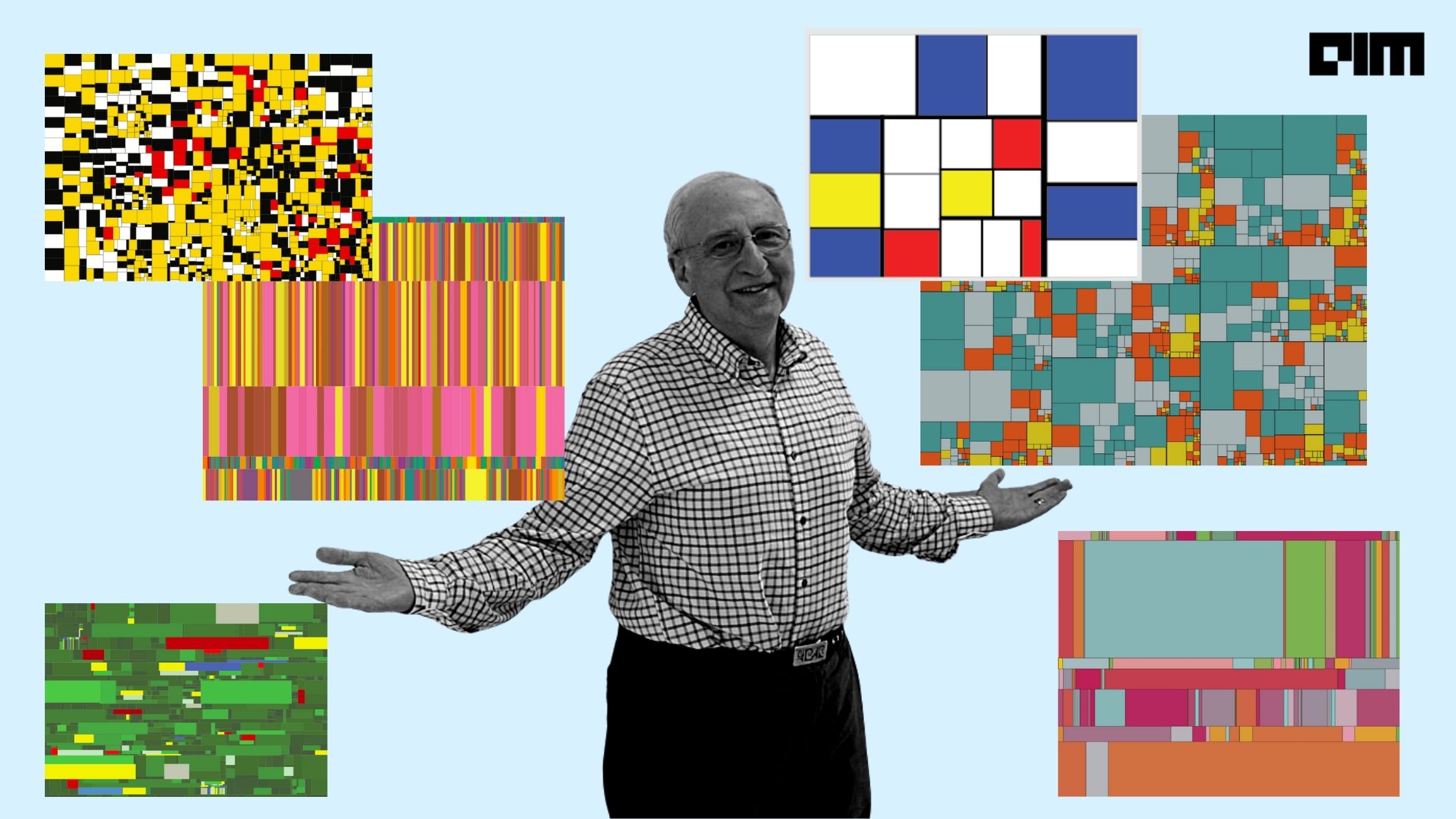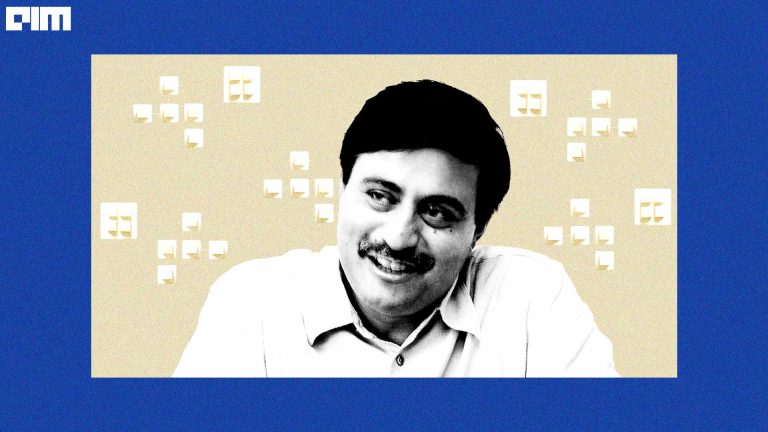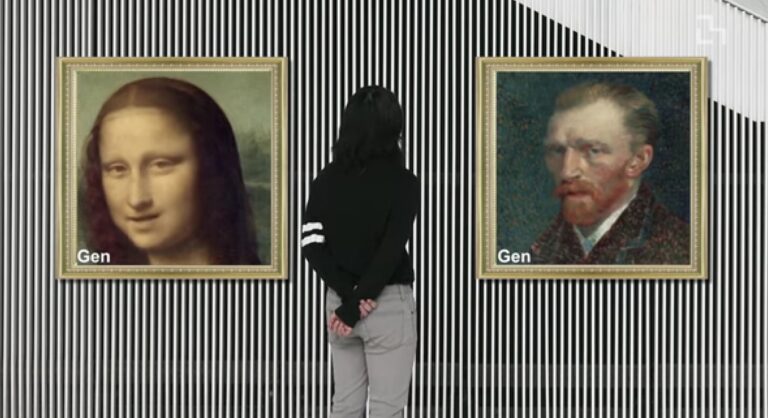Treemap, a predominantly utilized visualization chart type, was invented by Ben Shneiderman in 1990. The Founding Director of the Human-Computer Interaction Laboratory (HCIL) was inspired by the images of Optical art that he came across during the 1960s, at the Museum of Modern Art in New York.
Treemaps are huge square boxes that include data trees in the form of rectangles. The concept involves colours and shapes to achieve clarity in presenting complex data in the form of trees. Shneiderman designed 12 such treemaps using real-time data, which are preserved in museums of modern art across America.
While he initially used the Treemap to understand space allocation on a hard drive in 1990, the aesthetic choices involved in making treemaps paved the way for further implementation of the concept in data visualisation. David Woodword’s work ‘Art and Cartography‘ established the importance of visual elements used to narrate a story. In his book, he explains the paintings of Dutch painters who sketched maps of that era hung on walls as pieces of art.
How Op-Art inspired Shneiderman
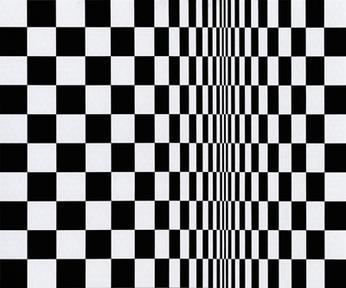
Shneiderman’s Treemap is a tiling mechanism used to visualise a tree structure through nested rectangles of different colours. Treemaps are primarily used to visualise hierarchy in data. This concept for data visualisation focuses on the adaptable use of space, with colours representing varying information. Shneiderman was inspired by the 1960’s ‘Op Art’ and the exhibits that he came across at the Museum of Modern Art in New York. Op Art or Optical Art is a form of kinetic art related to geometric designs that create movement as a viewer sees the image. In 1965, an exhibition in New York entitled “The Responsive Eye” had several black-and-white op art images on display. The patterns of art in these images influenced the style in print graphics, fashion, and advertising.
Shneiderman derived inspiration from the Op Art and established four aesthetic aspects of Treemaps:
- Layout design (slice-and-dice, squarified, ordered, stripped)
- Colour palette (muted, bold, sequential, divergent, rainbow),
- The aspect ratio of the entire image (square, golden ratio, wide, tall), and
- The prominence of borders for each region, each hierarchy level, and the surrounding box.
What exactly are Treemaps?
Treemaps are boxes with rectangles of different sizes that are coloured. The aesthetics used in these shapes display data that triggers interest (emotions) in viewers. Even as algorithmic rules constrain treemaps, aesthetics involved in the process make room for creative exploration. In his book titled ‘Every AlgoRiThm has ART in it’, Scheiderman explains the 12 prints of Treemaps based on data provided by international organisations. The original prints of these treemaps were first put on display in the University of Maryland Computer Science Instructional Center on 26 August 2013. While it was initially decided that the prints will be hung for two months, it has become a permanent exhibit for the state of the art it entails.

Shneiderman’s treemaps have been traveling places under the exhibition titled “Every AlgoRiThm has ART in it: Treemap Art Project“. With treemaps, Shneiderman claims that the human mind processes information differently when it is organised visually. It is an attempt to understand human interaction with data visualisation through art.
With the use of coloured blocks, Treemap makes it easier for viewers to base their understanding on size, aspect, and colours. Treemap is composed of nested rectangles or tiles, and the area of each rectangle is proportional to the data they represent. Larger rectangles denote higher hierarchy levels and are the main/ root branches of a “Data Tree”. The data tree is then divided into smaller boxes that show the lower levels of the hierarchy. These rectangles are used to display datasets, where the goal is to “break” the data into its constituent parts to identify its larger and smaller components quickly. For instance, the following Treemap categorises Jamaica’s exports in 2017, separated by sector – chemicals, minerals, oil, agriculture, etc.
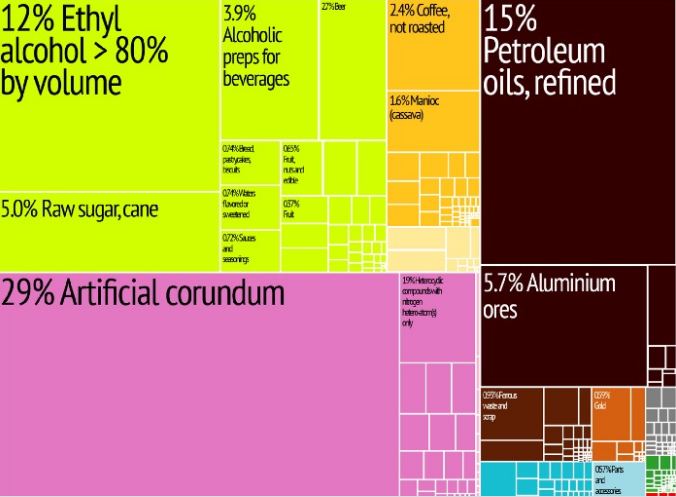
Schneiderman’s Art with Authentic Data
To establish his findings in data visualisation through treemaps, Shneiderman used authentic data from the World Bank and explained how urban populations could be categorised in different countries. He even gathered information over carbon emissions from the US Energy Information Administration and organised all the data into seven continents to display them on a treemap. The size of the boxes in this illustration represents CO2 emissions while the colours vary by per capita CO2 emission, writes Shneiderman in his book. He also used the Treemap to illustrate the engagement score of audiences for the TED talk. Sebastian Wernicke compiled the data for his TED talk titled “Lies, Damned Lies and Statistics”. The colours in this specific Treemap attempted to show the variety in the TED talks.
The 12 Treemaps in Museums of Modern Art
His illustrations with real-time data bridge the gap between art and science and show that both disciplines intersect in many given instances. Many of Shneiderman’s works have found a place in museums of modern art, the first being the University of Maryland, followed by the National Academy of Sciences in Washington DC, where a copy of Shneiderman’s Treemap is on display at the Keck Center, from October 2014. Another copy of the Treemap Art Project was on display at the Howard Hughes Medical Institute, Virginia, and was later moved to Chevy Chase, MD headquarters in 2016. Next is the Museum of Modern Art in New York, which received all the 12 prints of Shneiderman’s treemaps and were conserved by the museum. University of California, Irvine, and Swansea University in the UK also houses Shneiderman’s treemaps.

The University of Maryland, where Shneiderman is a Professor, also has developed a tool to produce treemaps that are available for download and use. Treemaps are one of the most efficient tools to understand complex data. The concept is aimed at presenting bulk data in hierarchical patterns in a space-constrained layout. The significance of this tool is its efficiency in using space and intelligent colour mechanisms to generate a layout with rectangles that show variations in data based on its quantity. In a way, treemaps ease data interpretation by eliminating heavy texts and replacing them with shapes and colours.


